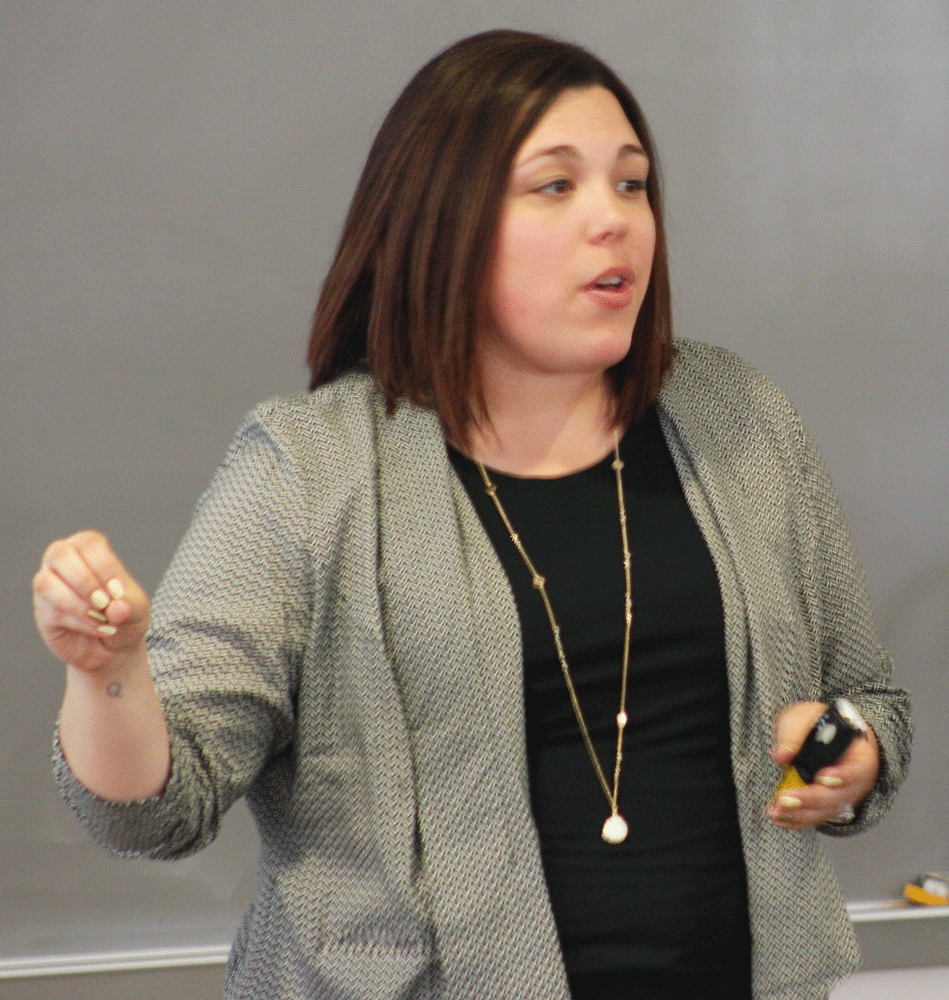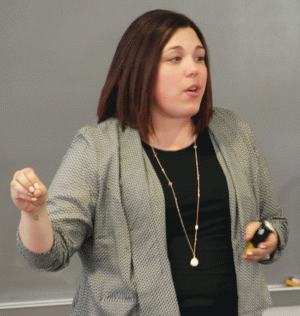Rachel Schmitz and Laura Simon advise students interested in graduate school
Each presented current research from dissertations
April 1, 2015
Two paths. So similar, so different.
Two aspiring alumni presented their current research and gave advice to students considering graduate school in Connell Hall this past Monday.
Rachel M. Schmitz and Laura Simon are both currently attending the University of Nebraska—Lincoln, pursuing their Ph.D.’s in Sociology. They both originate from Norfolk and graduated Wayne State College with degrees in sociology.
Schmitz in 2009, Simon in 2007.
They both obtained their master’s degree in sociology from UNL.
Schmitz in 2013, Simon in 2011.
They take two different paths towards research in sociology. Schmitz prefers qualitative research, while Simon prefers quantitative.
While at WSC, Schmitz conducted her research on symbolic interaction. She titled her research “Living Latino/a in the Midwest-An analysis of cultural perspectives of Latinos in businesses.”
Simon conducted hers on adolescent sexual behavior trends. She did a media content analysis using “Seventeen Magazine” to examine the double-standards given to adolescent (12-18-year-old) females.
“The title of my presentation was called ‘Hooking Up or Saving It,’” Simon said. “I found we’re giving mixed signals to our young women.”
Both Simon and Schmitz took time off before attending graduate school at UNL.
“My number-one piece of advice would be identifying a program that is the fit for you,” Simon said. “Identify what you want to study and align yourself with faculty that have similar interests.”
While pursuing her master’s degree, Schmitz continued her focus on qualitative research. She interviewed 40 homeless young adults. Her theses was titled “Tentative Transitions and Gendered Pathways: Exploring the Revolving Door of Young Adult Homelessness.”
Both Schmitz and Simon are considered “All But Dissertation (ABD).” They have successfully completed all their required classes, and passed all the required exams. The “only” thing they have left to do is defend their dissertation.
Schmitz is currently comparing the life trajectories of homeless young adults and young college students from the LGBT+ community. She is gathering information on 20 homeless young adults and 20 LGBT+ college students.
Ecological Momentary Assessment (EMA) was the method she used to collect her data.
“EMA involves collecting data in the moment,” Schmitz said.
She is doing this by incorporating technology into her research. She has equipped all 40 participants with a cell-phone. This allows them to record their experiences as they’re happening, making it more accurate.
“The homeless population is very transient. They move a lot, which makes it difficult,” Schmitz said.
Simon is currently trying to figure out if sexually risky adolescents turn into sexually risky adults. She is using data collected from the National Longitudinal Study of Adolescent Health. This database surveys 20,000 participants aged 12-18 and examines their sexual behavior, trends and outcomes.
“It’s great, but can also be limited because there are questions I wish they would have asked but didn’t,” Simon said. “That’s the downside of quantitative.”
In the future, she plans on mapping sexual patterns from adolescence to emerging adulthood to examine adult health outcomes.
Both Schmitz and Simon plan on teaching at the university level upon graduation.
“My ideal position would be tenure track,” Schmitz said. “I don’t want to settle for anything less.”











